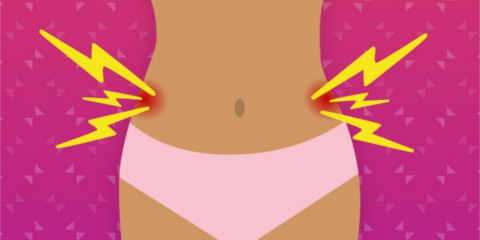Endometriosis is a gynaecological condition where endometrial-like tissue grows outside the uterine cavity. Endometriosis is fuelled by the hormone oestrogen. This tissue can attach itself anywhere within the pelvic and abdominal cavity, with reports of endometriosis even found on the diaphragm (though this is very rare)! Unfortunately, the human body is not equipped to remove these tissue growths, and they continue to act as endometrial-like cells, so with every menstrual cycle, scar tissue and adhesion’s can form through the release of oestrogen. This can cause a wide range of symptoms, including inflammation, bloating, pelvic pain and cramping.
Endometriosis and exercise have a similar relationship. Feeling exhausted and in chronic pain often can make us not want to do any physical activity at all. Yet, research has shown that exercise can help improve our energy levels, improve our surgery recovery time, help manage symptoms, and even lower oestrogen.
Best Exercise for Endometriosis
Regular physical exercise can have protective effects against diseases that involve inflammatory processes since it causes an increase of the anti-inflammatory and antioxidant markers within the body and acts by reducing oestrogen levels, making it a great idea to incorporate exercise into your recovery and disease management. Exercise will also release endorphins which are “feel good chemicals” from the brain and improve circulation!
The pain and discomfort associated with Endometriosis can cause a guarding mechanism within the body – where the body braces to protect itself from pain. This bracing can affect the pelvic floor, abdominal wall and hip flexors – the anterior side of the body. So firstly, when resuming exercise, it is important to first focus on the lengthening and strengthening of these muscle groups. You can’t strengthen a tight muscle! Exercises based around the principles of Pilates and Yoga can be fantastic to help these muscles release or stretches such as seated glute stretch, seated hip flexor stretch and a wall side bend stretch can really help to release those muscle groups.
Recommended Exercises
- Clams or side lying leg raises
- Sit to stands
- Glute bridging
- Hip thrusts
Exercises to Avoid
- Sit-ups and crunches
- High-impact exercises such as running / burpees
That’s not to say you can never return to high-impact exercise, however your body will require some rest and recovery to allow itself to heal while reducing these guarding postures!
What is PCOS?
Polycystic ovary syndrome (PCOS) is a condition that affects a woman’s hormone levels. Women with PCOS produce higher-than-normal amounts of male hormones. This hormone imbalance causes them to skip menstrual periods and makes it harder for them to get pregnant.
Reasons to train with PCOS
- Strength training reduces insulin resistance. Insulin resistance is at the heart of many PCOS symptoms including out of control hunger, cravings, fatigue, wonky hormones and weight loss resistance. Strength training improves insulin resistance through 3 different mechanisms:
- Muscle cells are one of the bodies main consumers of glucose. Growing more muscle cells through strength training helps keep your blood sugar at a healthy level.
- Exercise makes muscle cells more sensitive to insulin. The result? Your pancreas needs to produce less insulin to keep your metabolism running smoothly.
- A new research study found that exercise changes the expression of genes that are thought to cause PCOS-related insulin resistance.
- Strength training lowers male hormones in women with PCOS. Higher than normal androgens (male hormones) cause annoying PCOS symptoms like with like facial hair, belly fat, hair loss and acne. Many women associate muscle and weightlifting with testosterone, but that is not a logical conclusion when it comes to PCOS. Studies show that strength training reduces androgen levels in PCOS women.
Nutrition for PCOS
Focus on nutrition, not diet. Reducing foods in your diet that cause spikes in blood sugar is crucial to managing your PCOS. Try and balance your blood sugar throughout the day. Don’t fear fats. Or carbs.
Conclusion
So, combining strength training with a PCOS-friendly diet to prevent muscle loss and keep your metabolic rate high. Even if you are dieting, strength training will help with muscle growth and prevent muscle loss. Since muscle tissue helps you burn more calories while at rest and while moving, you will be able to smooth out some of the inevitable starts and stops that can be troublesome when trying to lose weight with PCOS.

